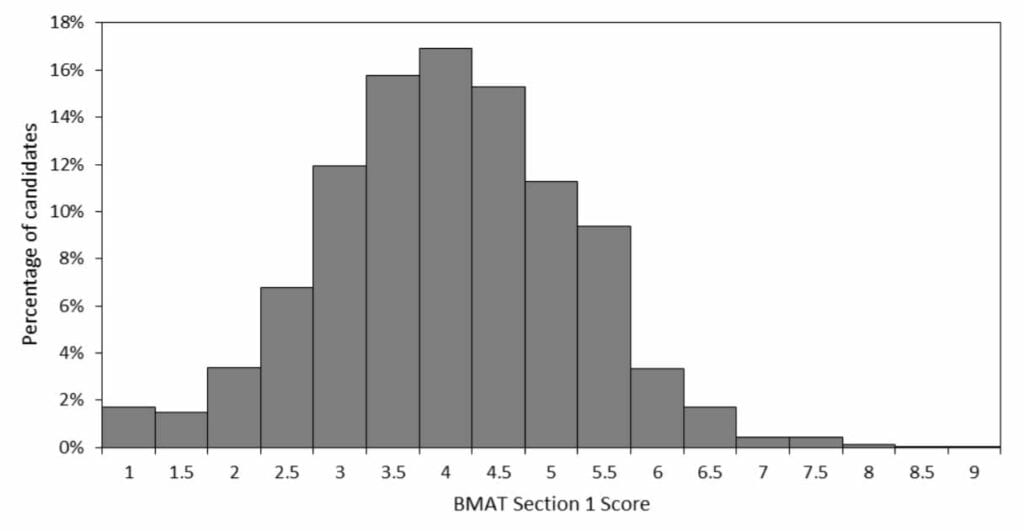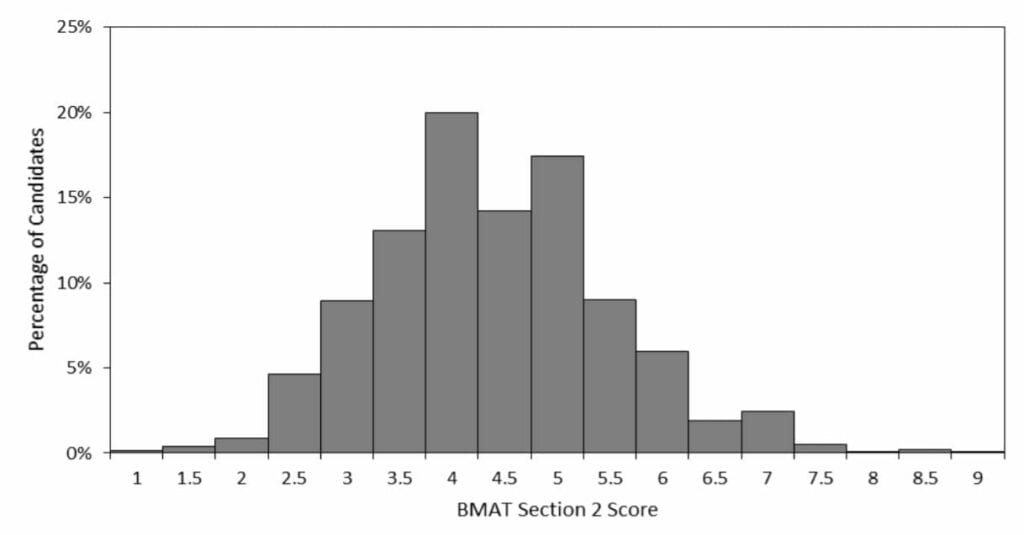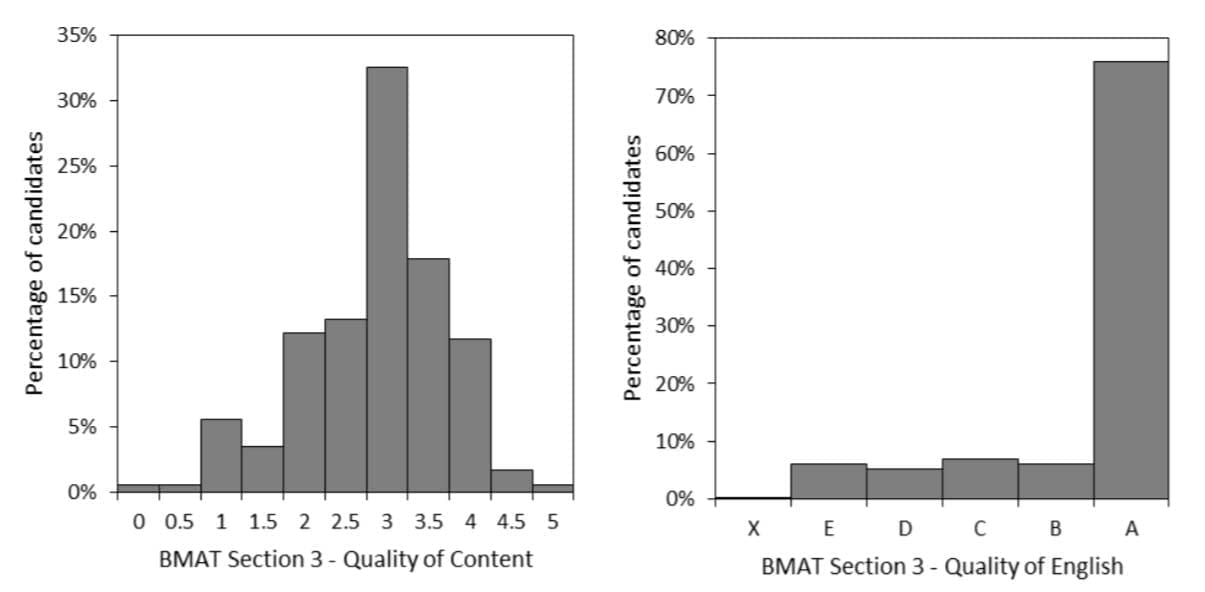The BMAT results 2018 are out so you can finally see how to stack up against other candidates this year!
The BMAT results 2018, as with every other year, are scored from a scale of 1.0 to 9.0. 1.0 being low to 9.0 being high. Your score can vary between these two figures to one decimal point e.g. 3.6. Extreme scores of 1.0 and 9.0 are very rare and the test is designed to be this way.
The test attempts to weed out performance of students applying to the highest calibre or university ungraduate courses. These students are by definition, the most capable students in the country. Thus, the test must be very difficult to score highly.
BMAT 2018 Section 1 Results
The mean score for the BMAT 2018 section 1 is roughly 4.0. Around 17% of candidates scored around 4.0. 15% of candidates scored around the 4.5 mark. There is then a significant drop off of just 11% of candidates scoring 5.0 or more. In total, only around 6.5% exceptional candidates got a score of 6.0 and above.
Comparatively for the BMAT 2017 results, the mean score was roughly 4.5-4.7. This highlights that the BMAT 2018 section 1 was more difficult than last year’s test. If you got a lower score than you were expecting, judging by doing past papers, this is likely to be the reason why. Roughly 15% of candidates scored above 6.0 in the BMAT 2017 paper. This really highlights the difficulty of Section 1 in the 2018 BMAT.

BMAT 2018 Section 2 Results
Section 2 for the BMAT 2018 has a very strange shape. Around 20% of candidates scored 4.0-4.5. This is similar to Section 2 of the 2017 BMAT, which had around 23% of candidates scoring between 4.0-4.5.
However, the percentage of candidates who scored 4.5-5.0 drops to around 14%, this rises back up to 17.5% for candidates scoring 5.0-5.5. This is strange because the graphs for BMAT results usually have a fairly linear, parabolic shape.
The very top end (6.5-9.0) represents around 6.5% of candidates. This is very similar to the BMAT 2018 Section 1. It also falls in line with BMAT 2017 Section 2 results, where around 7% of candidates scores 6.5 and above. The difficulty of Section 2 is roughly in line with that of the 2017 BMAT paper.

The Imperial BMAT cut off along with many other universities historically >>>
BMAT 2018 Section 3 Results
BMAT Section 3 is scored differently to the first two sections. Here is information sourced from Cambridge Admissions testing:
Score 1: An answer that has some bearing on the question but which does not address the question in the way demanded, is incoherent or unfocused.
Score 2: An answer that addresses most of the components of the question and is arranged in a reasonably logical way
Score 3: A reasonably well-argued answer that addresses ALL aspects of the question, making reasonable use of the material provided and generating a reasonable counter-proposition or argument.
Score 4: A good answer with few weaknesses.
Score 5: An excellent answer with no significant weaknesses.
An answer judged to be irrelevant, trivial, unintelligible or missing will be given a score of 0.
Band A – Good use of English
Band C – Reasonably clear use of English.
Band E – Rather weak use of English.
Bands B and D fall in-between their respective neighbours.

By far, the most common score for the BMAT 2018 Section 3 was 3A.
These answers were reasonably well-argued, addressed the question entirely, created a good counter argument and were written with good English. A score of 5A (the highest possible BMAT 2018 Section 3 mark) was only awarded to less than 2% of candidates.
Both of these statements are true when concerning the BMAT 2017 Section 3 scores – so the difficult of the question and responses given are very similar.
And there you have it – the BMAT 2018 results in full! Did you do as well as you had hoped?
The next step to your application is your interview.
You know the BMAT took preparation – why would the interview be any different? UniAdmissions can help you gain valuable experience for your medical school interview through our Interview Programmes.
DISCOVER UNIADMISSIONS’ INTERVIEW PROGRAMMES





